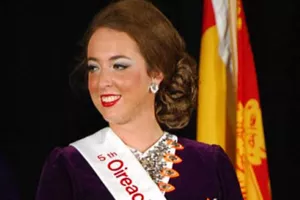
UTM student qualifies for top Irish dancing competition
Very few full-time university students have the time to participate in an intensive extracurricular activity, let alone perform as a pro—but that’s exactly what Jacqueline Boutilier has achieved.
A third-year student in UTM’s Concurrent Teacher Education Program, Boutilier is also a long-time competitor in Irish dancing. Next April, she will fly to London, England to participate for the second time in the field’s top competition, the World Irish Dancing Championships.
“It’s very exciting, because my ultimate goal was to qualify one more time, and I made it,” said Boutilier, 20.
Irish dancing has been a passion and pursuit of Boutilier’s for more than a decade. At age ten, after seeing the show Riverdance with her parents and being dazzled by the dancers’ moves and energy, she asked her mother to sign her up for lessons. She started taking classes at a studio in her Oakville community, and says she fell in love with the dancing’s complexity and athleticism. While she was older than all the other kids—most beginners start at age 4 or 5—she was determined to get ahead.
“I remember seeing the older girls dancing, they were so amazing and I always looked up to them,” she says. “I made it my goal to go to the world championships.”
To compete at that level, Boutilier had to take classes four or five times a week to master the basic moves of Irish dance, which generally feature a controlled upper body, straight arms, and quick, precise movements of the feet. Some dances are performed in “hard shoe”—tap dance-style shoes, and others with a “soft shoe,”—lace-up shoes; to perform at the world championships. Boutilier had to learn solo routines in both styles.
Boutilier’s hard work and dedication paid off: in 2011, she qualified for the following year’s world championships in Dublin, Ireland. The nine-day event featured thousands of dancers from around the world, including about 120 people in Boutilier’s competition (participants are divided by age). While she didn’t rank, she says it hardly mattered: “It was such an amazing experience, you don’t realize how big of a scale it’s on...I was just happy to be there with my family and have the chance to compete.”
While Dublin marked a major milestone for Boutilier in her Irish dancing journey, she says balancing it with first-year university academics was overwhelming. Indeed, it’s the reason most Irish dancers stop performing before they start post-secondary school. She decided to take a year off from dancing to focus on school, and she wasn’t sure she would ever return. But ultimately, she couldn’t stay away from the hobby she’d grown to love.
She says returning to Irish dancing has been difficult—while she remembered all the moves, it took time muster up the strength and endurance needed to perform as she once did. So in addition to practising a few times a week, she regularly does cardio exercises and yoga at her gym to get back into shape. At the same time, she has been managing the considerable demands of her academic program, which involves simultaneously completing both an honours bachelor’s degree in either arts or science, and a bachelor of education degree.
Boutilier’s comeback moment came in November, when her performance at Canada’s Eastern Regional Oireachtas championships in Montreal qualified her to compete in next year’s World Championships.
Says Boutilier: “I was very happy, because it was no easy task getting back to the fitness level I had before. It took a lot of work and commitment. So it’s very thrilling to have this second chance.”
